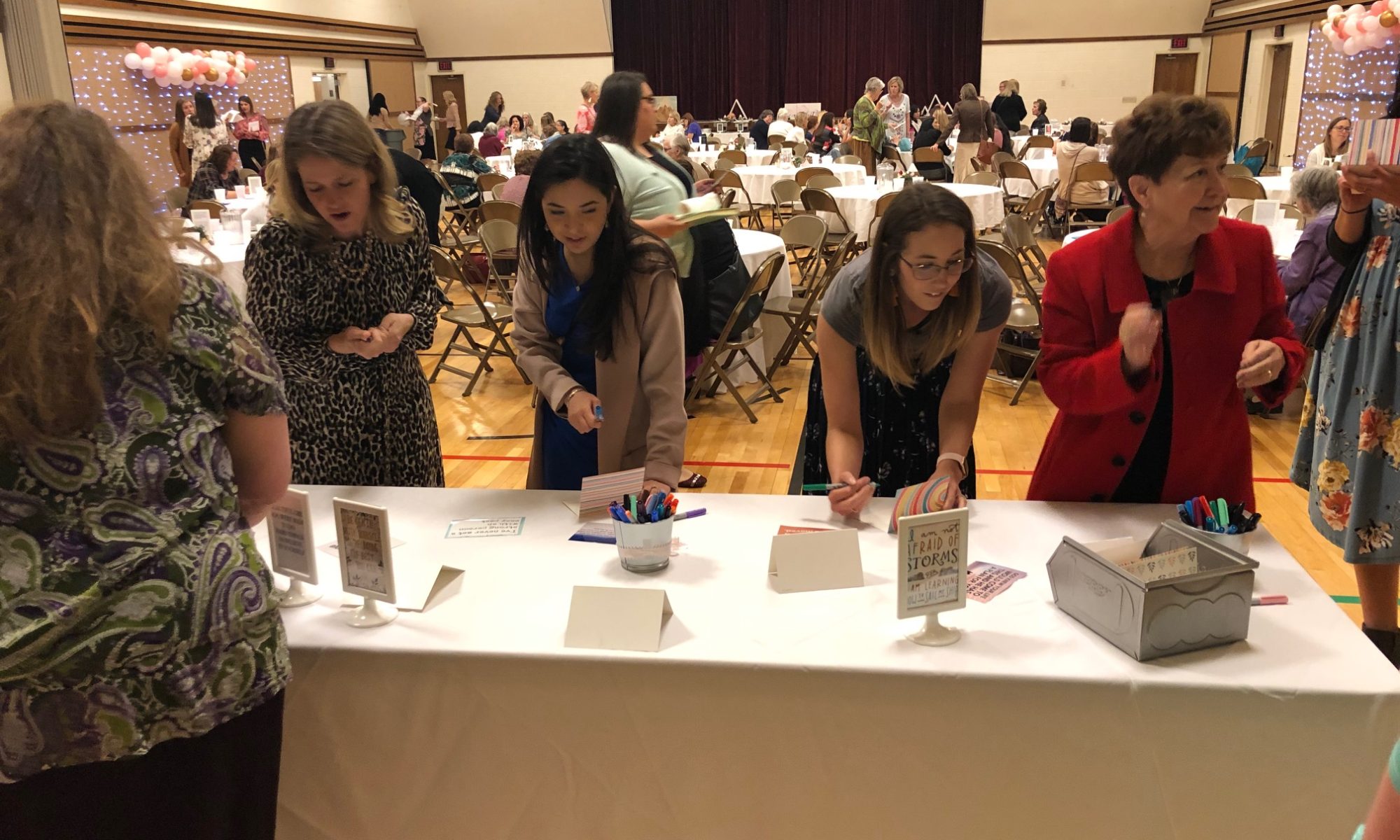by Leisa Parsons, Area Media Specialist
They may be stuck inside, but these sister missionaries are intent on doing good. Sisters Smith and Fowles, from the Texas San Antonio Mission, have been busily sewing much needed face masks to help protect others from COVID-19. As missionaries, a large part of their week is dedicated to service in the community. With the stay at home orders, many missionaries have had to adjust how they serve, along with how they teach the gospel.
Their schedules are much the same as they have always been, like many across the world missionaries for the Church of Jesus Christ of Latter-day Saints are now learning to “work from home”. “Before, as missionaries we used technology in our teaching mainly in person, with our videos.” said Elder Van Ausdal. He continued, “… most of our finding and teaching was done in person. No one knew how to use technology very efficiently and so this has been very good because it has forced missionaries to dive into technology and it has given them the time to do it.”

Elder Van Ausdal and his companion, Eider Caldwell, who are currently serving in the Castle Hills Ward in the San Antonio North Stake feel the work is progressing despite being indoors. “We have more frequent lessons instead of once a week for maybe 45 minutes, we can teach several times a week for 15 minutes each.” said Elder Van Ausdal. Elder Caldwell added, “We’re able to teach the same amount of doctrine and extend the same amount of invitations to help them progress, its just more frequent. It is moving the pace of the work forward that much more.”

Sisters Smith and Fowles, who are currently serving in the Sixth Ward in the San Antonio Stake, are also enjoying the opportunity to connect with so many through technology. Sister Fowles said, “We have tried to set up a lot of lessons with members and those have been fun. Those have been really fun!” Sister Smith added: “We … invite them to reach out to other people, so that they can take part in missionary work. Missionary work is really just reaching out to other people in love – whether that’s a member of the Church or somebody that they know…. Then we follow up, and they have had some awesome experiences themselves either just texting or thinking of ways to minister to others.”

Along with teaching, missionaries are asked to perform at least 10 hours of community service each week, this has proved a bit harder to accomplish. Sister Fowles and Smith became aware of a wonderful service making face masks, being performed by families in their ward and soon, they too were busy pressing, snipping and sewing. “Members brought us sewing machines, scissors, thread, fabric and everything we needed.” said Sister Smith. Sister Smith, who had sewed some previous to her mission, has been sewing while Sister Fowles has been cutting, pressing and trimming threads. As a companionship, they have been responsible for sewing close to 200 masks that have subsequently been donated. Currently they are sewing enough masks to equip all of the missionaries in the Texas San Antonio Mission.

The Sisters are quick to point out that all of this has been made possible by generous donations from ward members. The idea actually began with the White family. Naomi White works as Director of Operations for the operating room at North Central Baptist Hospital. She became aware of the shortage of face masks well before it became public.

Naomi’s husband, Daniel, who sold medical equipment, found himself out of a job due to COVID. He said, “I’ve never been unemployed in my life and it’s been really difficult.” He hopes to teach his children something about service even when situations are hard. He is definitely teaching by example, with some of his children helping in the process.

To date, the White family along with the Shirley family and the Sister Missionaries have made over 1,000 masks that they have donated. Quickly running out of funds and fabric they have adopted the philosophy of donating all they can and selling some to recoup a fraction of their costs. They hope by selling some to neighborhood folks and others that they can continue to make more to donate to health care facilities. Many that have received a mask have commented on their quality. With the Shirley family and the White family both in the medical field, they have really paid attention to detail.

Unlike the missionaries, Daniel White’s schedule has drastically altered since the virus. He routinely begins sewing before 7:30 am and finishes sewing around 1:30 in the morning. He has been taking a little time out of his long day to bake with his two daughters who are also helping make the masks.

The missionaries, along with countless Church and community members have been forced to make large and small changes to their normal schedules. Daniel White summed it up so well when he said, “You have to step up and do something. You can’t watch the world go by.”

For ideas on how you can serve at home please check out: At home service ideas

















































